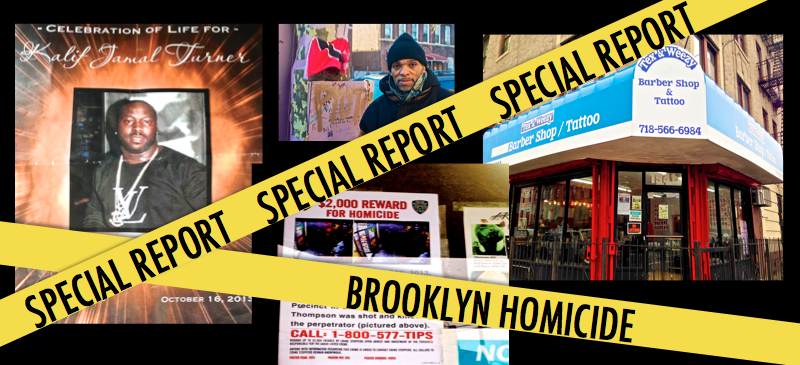Dear. Mr. Bratton,
Welcome to New York. Much has changed since your first tour of duty. For one thing, the murder rate is down dramatically—both citywide and in Brooklyn. But in certain poor neighborhoods they grind on and on. This special report is a look at the grim and stubborn problem in Brooklyn, and we hope it sheds some light.

In Part I, we examine the murder rate in Brooklyn from 2000 to now by precinct as well as the demographics of homicide victims in the last four months. Read the story here.
In Part II, we tell the all too common story of a homicide victim that couldn’t escape his troubles fast enough. Mervyn Spann, a resident of Brownsville, had plans to move to Miami and turn his life around that will never be fulfilled. Read the story here.
 In Part III, we spoke to members of the community of Kalif Turner and Kevin Thompson, recent homicide victims from Brownsville and Ocean Hill. They illuminated lives outside the lines of an obituary. Both men had ties to the same community hub, a barbershop, that is now shaken after witnessing so much crime in what city officials have called the “safest city in the nation.” Read the story here.
In Part III, we spoke to members of the community of Kalif Turner and Kevin Thompson, recent homicide victims from Brownsville and Ocean Hill. They illuminated lives outside the lines of an obituary. Both men had ties to the same community hub, a barbershop, that is now shaken after witnessing so much crime in what city officials have called the “safest city in the nation.” Read the story here.
In Part IV, We take a look at the cycle of domestic violence in Brooklyn and beyond, and the death of Sellis Gonzales. Read the story here.
In Part V, We asked what can be done about the issue of homicide and examine the institutional response to continued violence in Brooklyn, which continues even as the city’s murder rate has dropped drastically since its peak around 1990. We spoke with ManUp, a group looking to stop violence at its roots, and to City council member, Jumaane Williams. Read the story here.





Leave a Reply